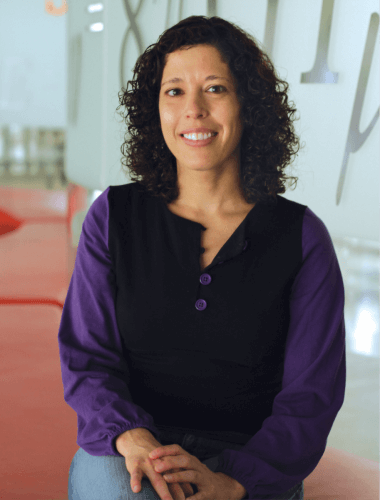When electrons "sense" each other's existence, fascinating physical phenomena occur

"Actually, I didn't know that I wanted to work in physics - until I started studying the field," says Dr. Karen Michaeli, who recently joined the condensed matter physics department at the Weizmann Institute of Science. This insight occurred while she was studying for her bachelor's and master's degrees in physics and computer science at Tel Aviv University. "I guess there are easier ways to make a living, but none of them are that fun," she says.
Dr. Michaeli completed her doctoral studies in Prof. Alexander Finkelstein's group at the Weizmann Institute of Science. After that, she was awarded the "Papalardo Scholarship" for post-doctoral research, which she did at the Massachusetts Institute of Technology (MIT) - which allowed her to conduct independent research in collaboration with a number of prominent physicists in this field. In addition, she was awarded a scholarship on behalf of the national program for the advancement of women in science awarded by the Weizmann Institute of Science, with the aim of helping young female scientists to go abroad for post-doctoral research.
As a theoretical physicist, Dr. Michaeli focuses on understanding the rich variety of electrical properties that characterize solid matter. In most semiconductors and metals, individual electrons "do not sense" the existence of other electrons, but when the electrons manage to sense the presence of other electrons, fascinating phenomena occur. Dr. Michaeli is interested in materials in which the electrical forces acting between the electrons lead to complex "group behavior". Such a phenomenon may turn the material into a magnet, a superconductor, and even into more unique and rare types of materials. The path to discovering their properties combines theoretical and experimental physics; And the possibility to examine basic insights in the laboratory, and even derive useful technological applications from them, particularly excites Dr. Michaeli. "Understanding the fascinating variety of physical phenomena will in the future be able to advance the field towards one of the ultimate goals of material science - the production of materials on demand," she says.
A group of materials that arouse her curiosity holds promise for the development of new types of electronics: multilayered structures of oxygen-saturated insulators. Like semiconductors, such systems can be precisely controlled in the laboratory, but they have another important property: the forces acting between their electrons are extremely strong. A surprising result of this property is the existence of two phenomena, which normally contradict each other, at the same time: superconductivity and magnetism. Recently, Dr. Michaeli managed to develop a model that solves this mystery, but many other questions are still waiting to be answered. "Our ability today to understand such materials is comparable to the level at which we understood semiconductors in the 70s," says Dr. Michaeli. "A lot of work is still ahead of us."
Another subject that preoccupies Dr. Michaeli concerns a powerful research tool, which is used to analyze interactions between electrons. The research in this field is done by testing the electric current that is created when temperature differences are caused between the two ends of a material. "The observation of the conversion of heat energy into electricity," says Dr. Michaeli, "constitutes a kind of 'magnifying glass', which allows scientists to understand the interrelationships between the electrons, and thus, in the end, formulate the physical laws underlying their behavior." This is because the forces acting between electrons may redistribute the energy, even in a situation where the electrons themselves cannot move.
In her early work, Dr. Michaeli developed a method for effectively predicting the results of experiments of this type, in which heat energy is converted to electric current, in many types of systems. The method he developed succeeds in identifying a tendency of the system towards superconductivity even when the forces are too weak to bring about such a situation in practice, and they cannot be distinguished with the help of other measuring means. In the future, she plans to continue to investigate the role of energy transfer in different systems of insulators, as well as examine the possibility of extracting essential information about the properties of such systems through additional types of measurements.
Although her research is usually done during theoretical discussions in front of the whiteboard or computer, Dr. Michaeli derives a lot from casual conversations with experimental physicists. "Sometimes, even a short conversation gives me a new angle to work on, or a new question that needs an answer. In other cases, I am the one who can contribute another look at an experimental system."
